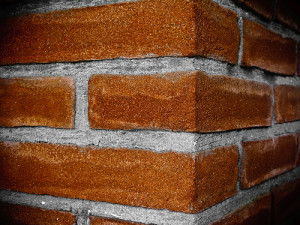 The New York Times‘ paywall is expected to go into effect sometime next month, making it the largest American newspaper to employ such a system.
The New York Times‘ paywall is expected to go into effect sometime next month, making it the largest American newspaper to employ such a system.
At least half of the site’s 30 million monthly unique visitors (who generate $100 million a year in online advertising) come in from from other sites such as search engines and social networks, and 85% of the NYT current online readership reads only a few articles per month. Those visitors won’t really be affected since NYT plans to allow online readers a certain amount of free articles per month. Janet Robinson, president and CEO of The New York Times Company, confirmed as much last October at the World Editors Forum in Hamburg. Robinson said the paper would remain part of the “online conversation” and “open web ecosystem” by employing a “first click free” strategy.
The other 15% will follow payment tiers, however. Exact details of the paywall have not yet been officially released, but leaked information, according to Lauren Indvik at Mashable, tells us that the tiers will include:
* A website-only subscription for unlimited access to the site (more than $20/month).
* A digital package that includes access to both the site and the Times’ iPad app (more than $10/month).
* A print subscription that bundles free Web access with a print subscription ($11.70+/month).
On Forbes‘ Mixed Media blog, Jeff Bercovici reports that online subscriptions may be included with any format of print subscription, not just seven-day plans. Bercovici was forwarded a subscription renewal letter from someone on the Weekender plan who pays $3.80 per week, or $15.20 per month. The renewal letter touted the benefits of the Weekender’s print subscription to include free Web access to NYTimes.com. Bercovici also points to an article by Slate senior writer Timothy Noah with tips for getting discounted subscription rates from NYT.
Jeremy W. Peters reports for NYT on Steven Brill’s experiment for Journalism Online, which found that “on average that advertising revenue and overall traffic did not decline significantly despite predictions otherwise.” Brill only sampled about two dozen papers, however, and they were all small- or medium-size. Peters writes:
[T]he initial findings showed that newspapers found success with a pay model by setting a conservative limit for the number of articles visitors could read free each month, and by making clear that most readers would not be affected. […] Mr. Brill said most papers set a limit on the number of free articles readers could view from five to 20 each month. Papers charged a range of monthly subscription fees from around $3.95 to $10.95.
Based on his findings, Brill said paywalls are a “nonevent for 85, 90, 95 percent of the people who come”.
Source: “What We Know About The New York Times Paywall So Far,” Mashable, 01/24/11
Source: “NY Times Paywall Update: It’ll Cost You, But Not Much,” Forbes‘ Mixed Media blog, 01/20/11
Source: “Wise Up, Print Addicts!,” Slate, 11/17/10
Source: “#WEFHamburg: Paywall will not remove NYT from ‘online conversation’, says CEO,” Journalism.co.uk, 10/07/10
Source: “New York Times Readies Pay Wall,” Wall Street Journal, 01/24/11
Source: “Under Pay Model, Little Effect Seen on Papers’ Web Traffic,” The New York Times, 01/17/11
Source: “So Far, Newspaper Pay Walls Are a Nonevent,” The Huffington Post, 01/19/11
Image by Fabrizio Monti (delphaber), used under its Creative Commons license.